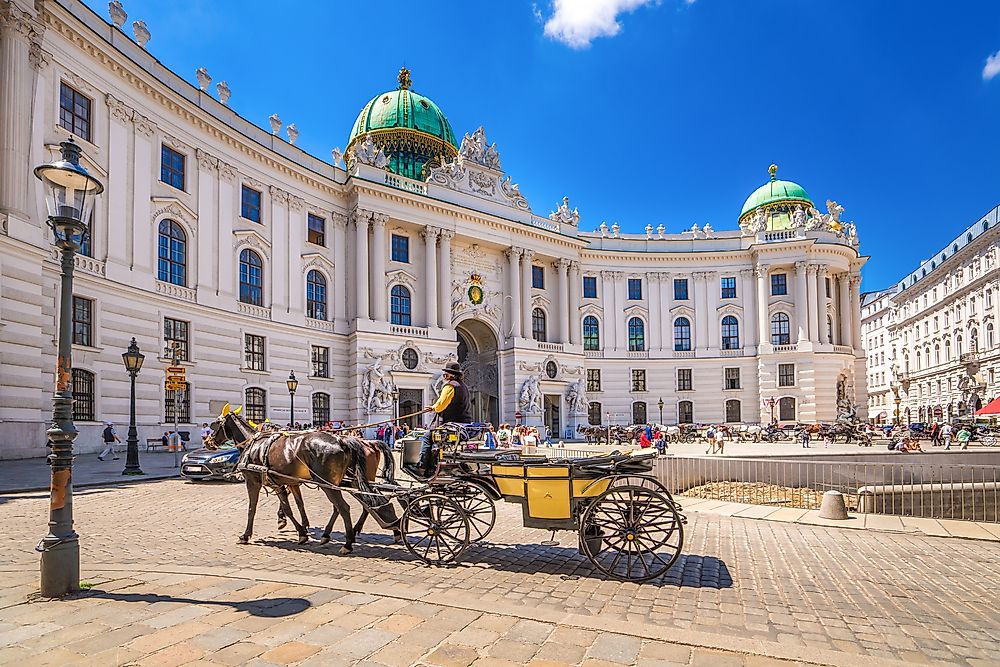Where Does The President Of Austria Live?

Austria is a country in Central Europe that encompasses a total area of 83,879 km2 and has an estimated population of 8,857,960. The country is governed as a federal parliamentary republic, and the President of Austria serves as the official head of state, which is primarily a ceremonial and figurehead role. The President of Austria, who is elected every six years and can remain in office for twelve consecutive years, resides in the historic Leopoldine Wing of the Hofburg Imperial Palace. The palace is steeped in political symbolism, as its origins can be traced back to Austria’s House of Habsburg royal dynasty (1438-1740).
The Hofburg Imperial Palace is located in the middle of Austria’s capital city, Vienna, and was constructed in the 13th century. The historic structure has undergone several renovations during its long history. Some of these additions include the construction of a chapel, treasury, Burgtheater (court theatre), sables (mews), numerous residences, and the Spanish Riding School. Hofburg Palace has also served as the official seat of government since 1279, and was previously used as a winter residence for royal inhabitants.
History
The historic Hofburg Palace was built by Holy Roman Emperor Leopold I during the late 13th century, and features architecture that is characteristic of the Late Renaissance period. The structure was originally designed by Italian-Swiss architect Filiberto Lucchese, but had to be rebuilt following the Battle of Vienna in 1683, at which time Giovanni Pietro Tencala had another floor installed. Other architects who have been involved in designing certain parts of the Hofburg Palace throughout the years include Lodovico Burnacini, Martino and Domenico Carlone, Lukas von Hildebrandt, Joseph Emanuel Fischer von Erlach, Johann Fischer von Erlach, and the architects of the Neue Burg (1881-1913).
Between 1438 and 1583, and once again from 1612 until 1806, Hofburg Palace was the seat of great political power, as it was occupied by numerous kings and Holy Roman Emperors. After 1918 the building served as the seat of Austria’s government, first under the Emperor and later under the nation’s federal president.
The Privy Council Room is also located in Hofburg Palace’s Leopoldine Wing. This room holds historical significance, as it was the location from which Emperor Franz Joseph I made his opening speeches at the Austro-Hungarian Delegation sessions, as well as where Archduke Franz Ferdinand gave his Oath of Renunciation on June 28, 1900, in which he renounced all claims to the throne. The lower level of the Leopoldine Wing was also once used as a very large wine cellar.
Current Use
The Hofburg Imperial palace, which translates to "Castle of the Court," faces the Heldenplatz (or Heroes Square), which was commissioned under the rule of Emperor Francis Joseph I. The enormous structure currently consists of numerous wings, including the Swiss, Leopoldine, Imperial Chancellery, Augustinian, Redoute, St. Michael's, and Montoyer Wings. The palace is also home to the Stallburg, Amalienburg, Court Library, and Joseph’s Square.
Hofburg is currently also the home of the Organization for Security and Co-operation in Europe (OSCE), an intergovernmental organization that was established in 1995 and consists of 57 member countries. The Hofburg was opened to the public in 1958, and has since served as a convention center regularly hosts about 300 events each year.











